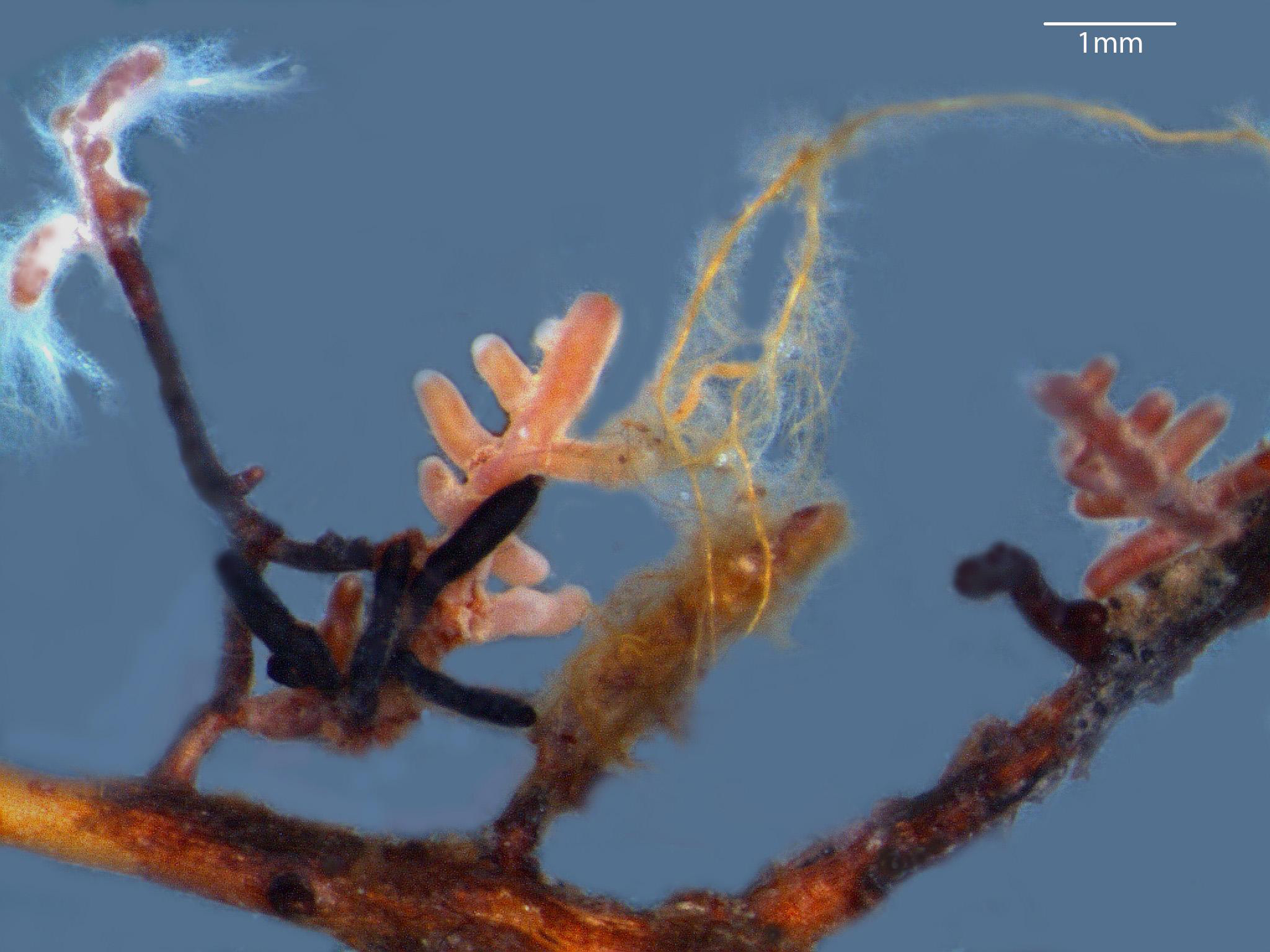Leaf litter- and wood-decomposing fungi help to break down leaves, needles and wood and to return their contents to the nutrient cycle. Equally important for the forest ecosystem are those fungi that live in close symbiosis with forest trees (Fig. 1), so-called mycorrhiza fungi. The symbiosis serves both partners – the tree and the fungus.
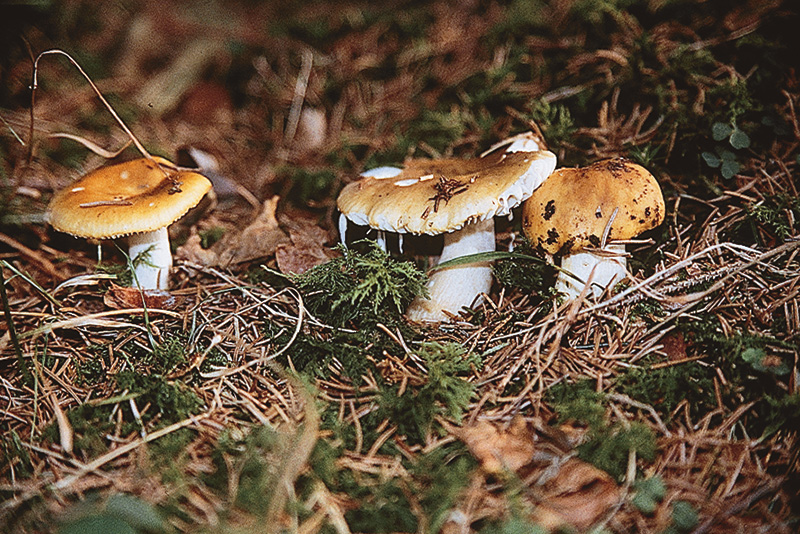
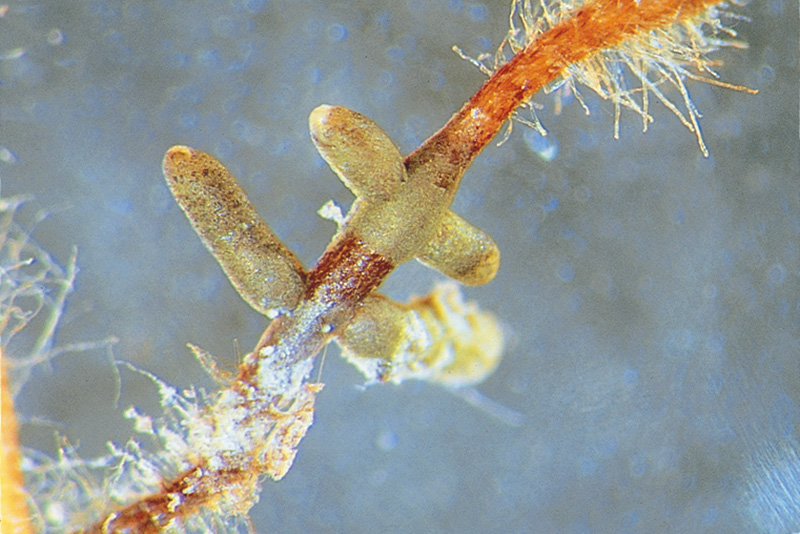
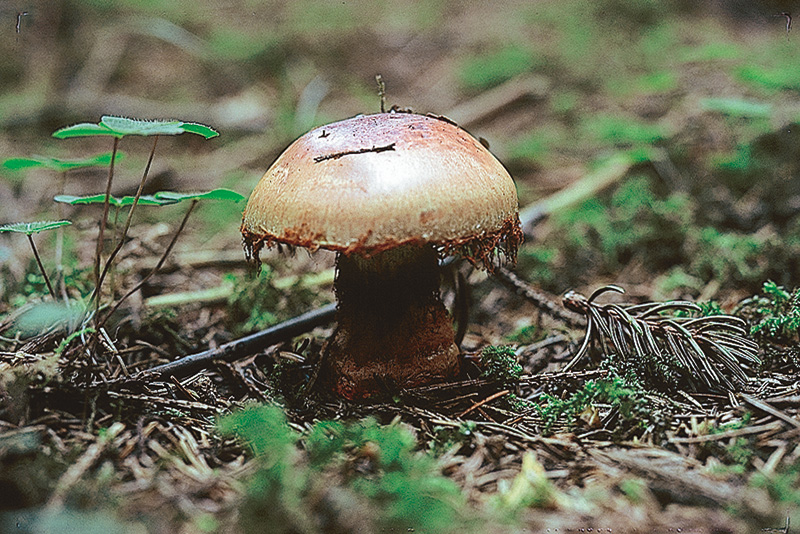
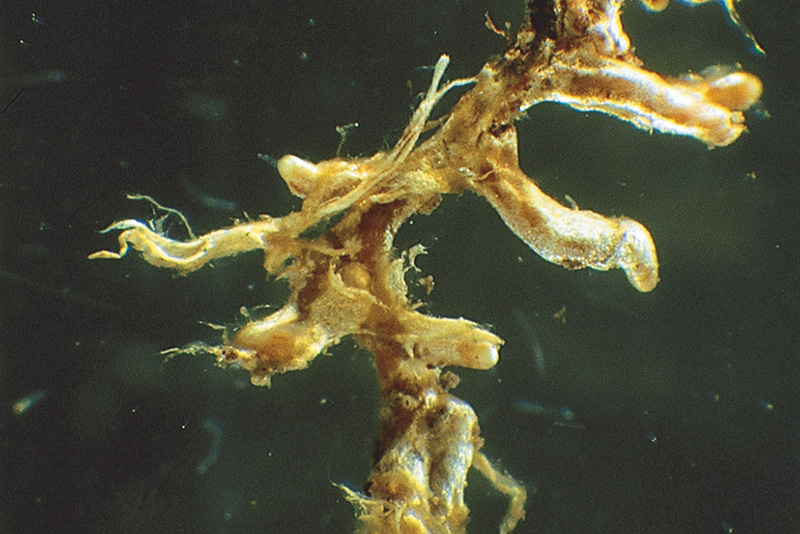
Fig. 1. Fruiting bodies and associated mycorrhizae of the common yellow russula aka yellow brittlegill (Russula ochroleuca, above) and the Cortinarius odorifer, below, a representative of the Cortinariacaeae family, the largest genus among mycorrhiza fungi.
What is a mycorrhiza?
The term mycorrhiza (from the Greek mukês for fungus and rhiza for root) just means “fungus root”, or “fungus-infested root”. A mycorrhiza is a root which is colonised by a mycorrhizal fungus (Fig. 2). The fungus covers the outermost fine roots with a thick network (mycelia) of closely woven fungal threads (hyphae), forming a coat of fungus (Fig. 3).
Approximately one third of the fungi growing in our forests are mycorrhizal fungi. Among these approximately 2000 species are a whole range of valuable edible mushrooms, but also many toxic ones. Many mycorrhizal fungi are host specific, which means that they only grow with specific tree species (i.e. larch bolete (Suillus grevillei) or oak milkcap (Lactarius quietus)). Others grow exclusively in deciduous forests, or coniferous forests.
Several different mycorrhizal fungi generally live side by side in the root system of a tree. In Central Europe, mycorrhizae occur on the roots of all tree species.
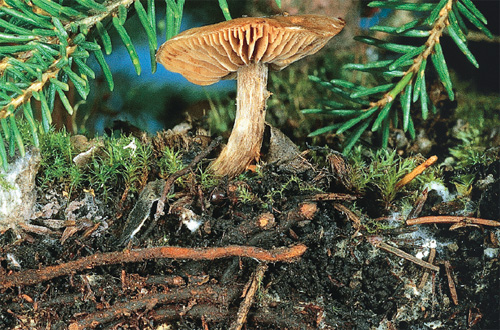
Fig. 2. Fungi and trees form a fascinating symbiosis. Photo: Simon Egli (WSL)
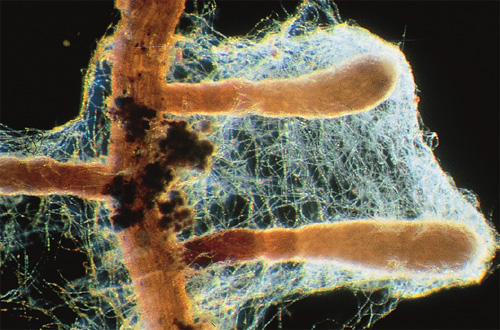
Fig. 3. The fungi form a thick coat around the outermost fine roots of the tree. Photo: Simon Egli (WSL)
Functions of the mycorrhizae
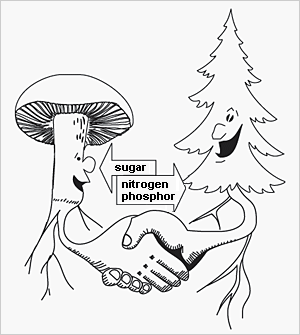
Fig. 4. Fungus and tree benefit from each other through the exchange of nutrients. Source: WSL
Nutrient exchange
The mycorrhiza is an organ in which substances are exchanged between the tree and the mycorrhizal fungus. While the tree feeds the fungus with sugar as a product of photosynthesis, it receives various nutrients from the fungus in return, such as nitrogen and phosphorus, which the fungus takes up from the finest soil pores with its hyphae (Fig. 4).
Protection from pollutants
Mycorrhizae can also protect the trees from the poisonous effects of pollutants. The fungi retain heavy metals that would otherwise be absorbed by the tree, acting as a sort of filter. The disadvantage, however, is that these heavy metals are accumulated in the fruiting body of the fungus. This can lead to toxic concentrations in edible mushrooms.
Further functions
Mycorrhizal plants show increased tolerance towards various stress factors. The trees are thus less susceptible to frost and more resistant to pathogenic microorganisms in the soil. Furthermore, the phytohormones of the mycorrhizae promote plant growth.
Threat to mycorrhizal fungi posed by nitrogen
Emissions of air pollutants caused by human activities have been increasing for decades, and with them the levels of deposition of acids and nitrogen in the forests. In Switzerland, 20 to 80 kg of nitrogen per hectare and year are discharged into the atmosphere from agriculture, industry, heating and traffic. Nitrogen is necessary for plant nutrition; however, increased levels of nitrogen may indirectly have a negative impact on trees by adversely affecting the mycorrhizal fungi. It is to be feared that certain species of fungus will disappear. High concentrations of nitrate also have a negative effect on the structural development of the mycorrhizae. The exchange of nutrients and carbohydrates between fungus and plant is reduced by this structural limitation, which in turn may have a negative effect on tree health and fruiting body development in the mycorrhizae.
No fungi, no forest?
Without forests there would certainly be no mycorrhizal fungi and we would search in vain for many well-known edible mushrooms such as porcini (Boletus edulis), chanterelles (Cantharellus cibarius), russulas, milk caps (Lactarius) and truffles. But how does it work the other way round? The question of whether a forest could live without mycorrhizae is not easy to answer; we have little practical experience of this, as there are fortunately still enough mycorrhizal fungi everywhere in our forests. What is certainly the case, however, is that in nutrient-poor soils, forest trees with no mycorrhizal fungi would barely be able to acquire sufficient quantities of mineral nutrients. Studies have shown that forest trees without mycorrhizal fungi have no chance of defending themselves from pathogens attacking the roots, and are generally more susceptible to stress, for example caused by drought, frost or harmful environmental influences. Mycorrhizal fungi are thus vital for forest trees, and it can be assumed that our forests would look very different without them.
Forestry measures to promote mycorrhizal fungi
- The thinning of dense, dark mature stands may stimulate the production of fruiting bodies by the mycorrhizal fungi.
- The more different tree species there are growing in a forest, the greater the species diversity of mycorrhizal fungi.
- After storm damage, the young plants left on the site are a refuge for mycorrhizal fungi that have lost their tree partner. They help to carry the fungi over into a new generation of trees.
- Do not burn logging residues. Leave single deadwood logs lying or standing.

